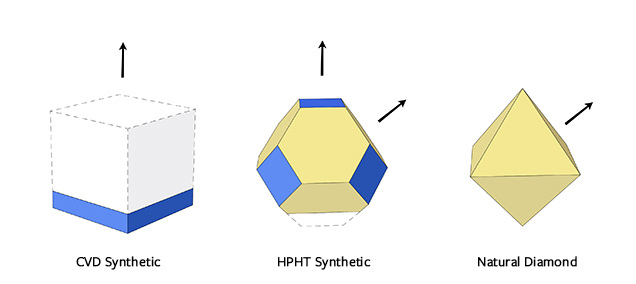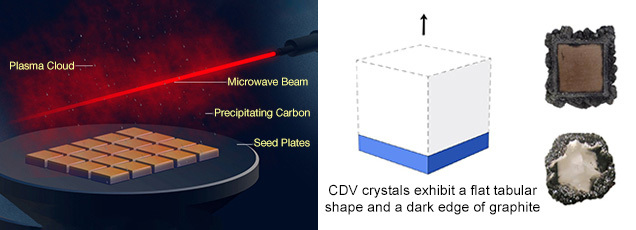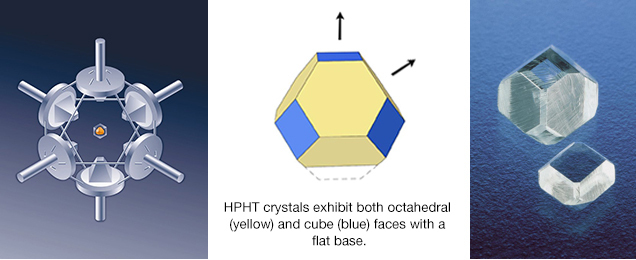Support
Education
Lab Grown Diamond History
The History of Lab Grown Diamonds:
- 1950s-1960s: Early attempts at lab grown diamonds were limited in quality and size.
- 1954: GE researchers successfully created the first synthetic diamond using the High-Pressure High-Temperature (HPHT) method, which simulated the conditions under which natural diamonds form deep within the Earth.
- 1980s: The Chemical Vapor Deposition (CVD) method was developed, allowing for the growth of larger and higher-quality diamonds.
- 2000s: Advances in technology led to lab grown diamonds suitable for jewelry.
Why are Lab Grown Diamonds Becoming Popular Now?
Quality and Variety: Thanks to advancements in both HPHT and CVD technologies, lab grown diamonds come in a wide range of sizes, shapes, and qualities. They exhibit exceptional quality and are nearly indistinguishable from natural diamonds.
Ethical Sourcing: Both HPHT and CVD lab grown diamonds are considered ethical options. They are conflict-free and have a lower environmental impact compared to natural diamonds.
Price Advantage: Lab grown diamonds, grown using either HPHT or CVD methods, are typically more affordable than natural diamonds of comparable quality, making them accessible to a broader range of consumers.
Customization: Consumers can select from various options for lab grown diamonds, including size, shape, and quality, allowing for the creation of customized and unique jewelry pieces.
Transparency: Many producers using both HPHT and CVD methods emphasize transparency, providing consumers with comprehensive information about the origin and characteristics of their diamonds. It is very hard to truly source the origin of a natural diamond.
Marketing and Education: The diamond industry, alongside lab grown diamond producers, has invested in marketing and educational campaigns to inform consumers about the benefits and differences between lab grown and natural diamonds. This has made it clear to consumers that lab grown diamonds are near identical to natural diamonds.
HPHT Method:
The High-Pressure High-Temperature (HPHT) method replicates the natural growth process of diamonds by subjecting a diamond seed crystal to extreme conditions of high pressure and high temperature. This process closely mimics the geological environment deep within the Earth where natural diamonds are formed over millions of years. Under these intense conditions, carbon atoms arrange themselves around a natural or lab-grown diamond seed crystal, resulting in high-quality lab grown diamonds that share the same physical and chemical properties as their natural counterparts.
CVD Method:
The Chemical Vapor Deposition (CVD) grows diamonds using a microwave beam or an antenna that causes carbon to precipitate out of a plasma cloud and deposit onto a substrate made of natural or lab grown diamonds.This process allows for precise control over diamond growth, enabling the production of high-quality, gem-grade lab grown diamonds. CVD offers advantages in terms of the ability to customize the growth process and produce diamonds with specific characteristics, such as size and purity.
Conclusion to Growth Methods:
In conclusion, both the HPHT and CVD methods are recognized as excellent ways to grow lab grown diamonds. The HPHT method simulates the natural diamond growth process through high pressure and high intensity, while the CVD method provides precise control over diamond growth. These complementary methods offer consumers a range of high-quality, ethical, and affordable options in the jewelry market, ensuring that lab grown diamonds continue to grow in popularity.


